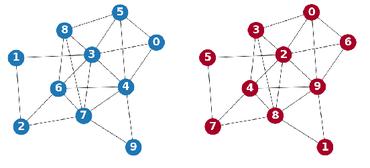Search Results for author: Zan Gao
Found 16 papers, 7 papers with code
Continual Learning with Strong Experience Replay
1 code implementation • 23 May 2023 • Tao Zhuo, Zhiyong Cheng, Zan Gao, Hehe Fan, Mohan Kankanhalli
Experience Replay (ER) is a simple and effective rehearsal-based strategy, which optimizes the model with current training data and a subset of old samples stored in a memory buffer.
Denoising-Diffusion Alignment for Continuous Sign Language Recognition
no code implementations • 5 May 2023 • Leming Guo, Wanli Xue, Ze Kang, Yuxi Zhou, Tiantian Yuan, Zan Gao, ShengYong Chen
As a key to social good, continuous sign language recognition (CSLR) aims to promote active and accessible communication for the hearing impaired.
 Ranked #2 on
Sign Language Recognition
on CSL-Daily
Ranked #2 on
Sign Language Recognition
on CSL-Daily
Identity-Guided Collaborative Learning for Cloth-Changing Person Reidentification
no code implementations • 10 Apr 2023 • Zan Gao, Shenxun Wei, Weili Guan, Lei Zhu, Meng Wang, Shenyong Chen
Moreover, human semantic information and pedestrian identity information are not fully explored.
Multi-Behavior Recommendation with Cascading Graph Convolution Networks
1 code implementation • 28 Mar 2023 • Zhiyong Cheng, Sai Han, Fan Liu, Lei Zhu, Zan Gao, Yuxin Peng
Most existing multi-behavior models fail to capture such dependencies in a behavior chain for embedding learning.
Temporal Action Localization with Multi-temporal Scales
no code implementations • 16 Aug 2022 • Zan Gao, Xinglei Cui, Tao Zhuo, Zhiyong Cheng, An-An Liu, Meng Wang, Shenyong Chen
However, the temporal features of a low-level scale lack enough semantics for action classification while a high-level scale cannot provide rich details of the action boundaries.
A Semantic-aware Attention and Visual Shielding Network for Cloth-changing Person Re-identification
no code implementations • 18 Jul 2022 • Zan Gao, Hongwei Wei, Weili Guan, Jie Nie, Meng Wang, Shenyong Chen
In addition, a visual clothes shielding module (VCS) is also designed to extract a more robust feature representation for the cloth-changing task by covering the clothing regions and focusing the model on the visual semantic information unrelated to the clothes.
 Cloth-Changing Person Re-Identification
Cloth-Changing Person Re-Identification
 Semantic Segmentation
Semantic Segmentation
Disentangled Graph Neural Networks for Session-based Recommendation
1 code implementation • 10 Jan 2022 • Ansong Li, Zhiyong Cheng, Fan Liu, Zan Gao, Weili Guan, Yuxin Peng
The session embedding is then generated by aggregating the item embeddings with attention weights of each item's factors.
A Novel Patch Convolutional Neural Network for View-based 3D Model Retrieval
no code implementations • 25 Sep 2021 • Zan Gao, Yuxiang Shao, Weili Guan, Meng Liu, Zhiyong Cheng, ShengYong Chen
Thus, we tackle this problem from the perspective of exploiting the relationships between patch features to capture long-range associations among multi-view images.
TBNet:Two-Stream Boundary-aware Network for Generic Image Manipulation Localization
no code implementations • 10 Aug 2021 • Zan Gao, Chao Sun, Zhiyong Cheng, Weili Guan, AnAn Liu, Meng Wang
In this work, a novel end-to-end two-stream boundary-aware network (abbreviated as TBNet) is proposed for generic image manipulation localization in which the RGB stream, the frequency stream, and the boundary artifact location are explored in a unified framework.
Multigranular Visual-Semantic Embedding for Cloth-Changing Person Re-identification
no code implementations • 10 Aug 2021 • Zan Gao, Hongwei Wei, Weili Guan, Weizhi Nie, Meng Liu, Meng Wang
To solve these issues, in this work, a novel multigranular visual-semantic embedding algorithm (MVSE) is proposed for cloth-changing person ReID, where visual semantic information and human attributes are embedded into the network, and the generalized features of human appearance can be well learned to effectively solve the problem of clothing changes.
Dynamic Modality Interaction Modeling for Image-Text Retrieval
1 code implementation • ACM Special Interest Group on Information Retrieval 2021 • Leigang Qu, Meng Liu, Jianlong Wu, Zan Gao, Liqiang Nie
To address these issues, we develop a novel modality interaction modeling network based upon the routing mechanism, which is the first unified and dynamic multimodal interaction framework towards image-text retrieval.
Review Polarity-wise Recommender
1 code implementation • 8 Jun 2021 • Han Liu, Yangyang Guo, Jianhua Yin, Zan Gao, Liqiang Nie
To be specific, in this model, positive and negative reviews are separately gathered and utilized to model the user-preferred and user-rejected aspects, respectively.
Interest-aware Message-Passing GCN for Recommendation
1 code implementation • 19 Feb 2021 • Fan Liu, Zhiyong Cheng, Lei Zhu, Zan Gao, Liqiang Nie
To form the subgraphs, we design an unsupervised subgraph generation module, which can effectively identify users with common interests by exploiting both user feature and graph structure.
Frame-wise Cross-modal Matching for Video Moment Retrieval
1 code implementation • 22 Sep 2020 • Haoyu Tang, Jihua Zhu, Meng Liu, Member, IEEE, Zan Gao, Zhiyong Cheng
Another contribution is that we propose an additional predictor to utilize the internal frames in the model training to improve the localization accuracy.
Local Shrunk Discriminant Analysis (LSDA)
no code implementations • 3 May 2017 • Zan Gao, Guotai Zhang, Feiping Nie, Hua Zhang
Principal component analysis (PCA) is a traditional technique for unsupervised dimensionality reduction, which is often employed to seek a projection to best represent the data in a least-squares sense, but if the original data is nonlinear structure, the performance of PCA will quickly drop.
Clique-Graph Matching by Preserving Global & Local Structure
no code implementations • CVPR 2015 • Wei-Zhi Nie, An-An Liu, Zan Gao, Yu-Ting Su
This paper originally proposes the clique-graph and further presents a clique-graph matching method by preserving global and local structures.








